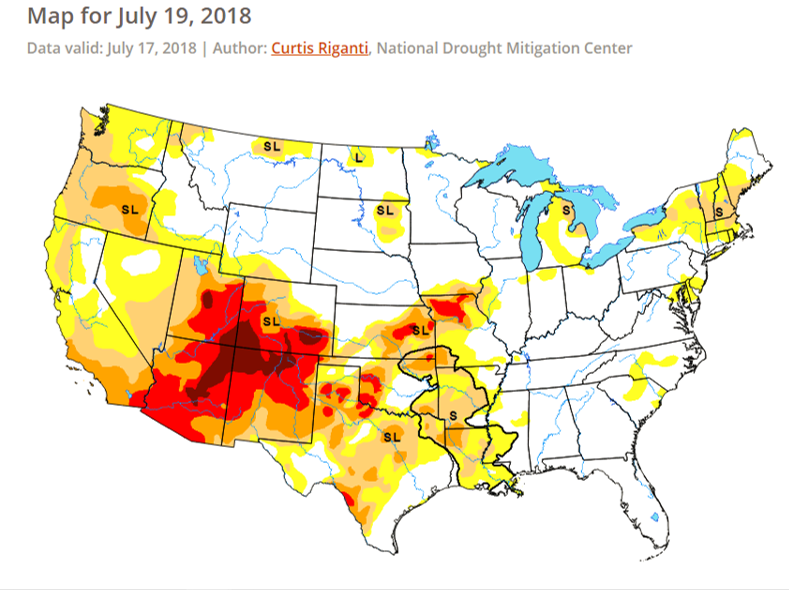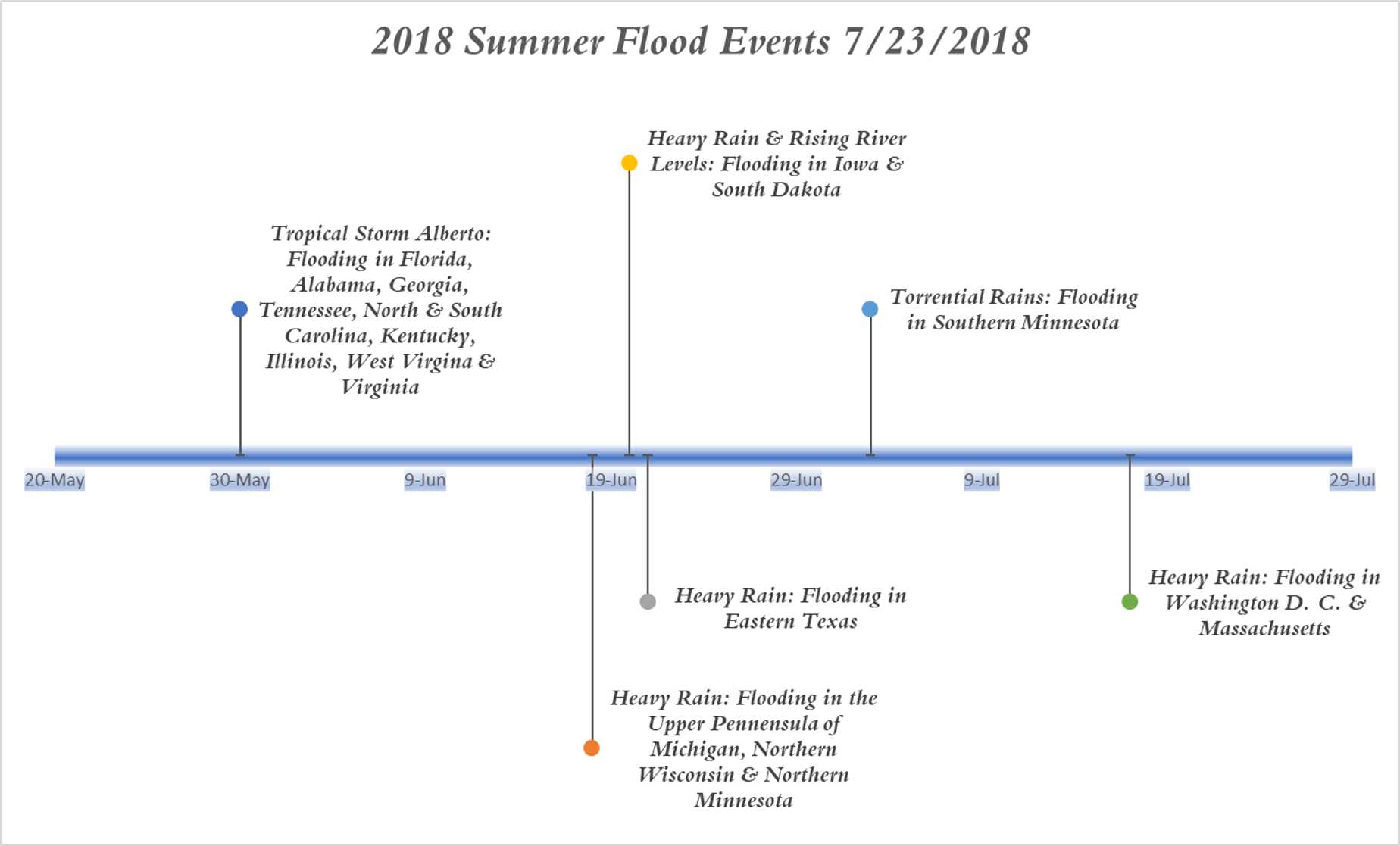
Rain is a Tricky Thing
We’ve all heard the Luke Bryan song “Rain is a Good Thing”. While it may be a catchy lyric, lack of rain can cause livestock producers to suffer from drought and heat stress issues, while too much rain can leave farmers dealing with flood damage. This year has been especially testing from those aspects. The southwest is on fire. Colorado, Utah, Arizona and New Mexico and areas of Texas, Kansas and Missouri are suffering from extreme drought and wildfires with surrounding areas battling through severe and moderate drought conditions.

In contrast, there have been 6 major flooding events due to excessive rain which have been declared disaster states this summer. There is no denying drought is difficult to handle, but flooding can be just as destructive with obstacles of its own.

To summarize the timeline above:
- May 30 – Tropical Storm Alberto’s heavy rainfall lead to flash flooding in 10 southeastern states.
- June 18 – Heavy rainfall in a short period of time lead to flooding mostly affecting the Upper Peninsula of Michigan, and parts of northern Wisconsin and Minnesota.
- June 20 – Heavy rainfall resulted in river levels rising and floods in northwest Iowa and southeastern South Dakota.
- June 21 – Some areas of Texas received more than 10 inches of rain in a 48-hour period resulting in flooding.
- July 3 – Torrential rains resulted in flooding in southern Minnesota.
- July 17- Heavy rain resulted in flash flooding in Washington D.C. and Massachusetts.
Rain resulting in flooding has several destructive effects on agriculture. First, damage to infrastructure such as roadways and powerlines. Dirt and gravel roads may get washed away during a flood, which will limit a livestock producer from checking and accessing animals. In the event of an evacuation often the animals are unfortunately left to fend for themselves. It is a challenge to put those access points back in place to get any operation up and running after the flooding. There will likely be damage to other assets as well such as outbuildings and machinery.
Second, the flood waters may carry sand and other debris with it. This debris will settle on top of fields and may result in a barrier to the soil, creating a challenge when trying to plant crops or maintain a pasture. Removing the debris and sand can be financially exhaustive and labor intensive.
Third, heavy rainfall producing floods will likely erode the soil and carry away valuable top soil. The erosion itself, will leave gaps and divots in fields making the next planting season more difficult with new obstacles in fields. The loss of top soil means the soil in the field will have less nutrients and likely will have lost aspects related to a healthy soil including structure and beneficial microorganism populations such as mycorrhizal fungi. It will be important for crop producers and pasture managers to consult with soil health experts such as Lance Gunderson or Emily Shafto at Ward Laboratories Inc. to replenish nutrients and rebuild soil health after a flooding event.
Fourth, if there were standing crops or forages in a field during a significant rain and flood event, those crops and forages likely are damaged. Powerful rains and hail can physically damage plants. Therefore, if harvesting for grain or planning to feed these crops or forages mold and mycotoxins should be tested. Additionally, corn, sorghum, oats, and other nitrate accumulating forages should be tested for nitrates due to the additional stress from flooding.
Finally, field operations may be hindered. Planting, and harvesting of crops may be delayed due to wet sloppy fields. If the areas affected produce hay, harvesting, drying and baling all present unique obstacles.
In conclusion, rain is not always a good thing. Too little leaves us with droughts and too much results in devastating floods. Always consider the obstacles of these disastrous events and make a plan before they happen to avoid panic when natural disasters occur.
More Resources:
Flood List
Farming After Flooding
The Impact of Extreme Weather Events on Agriculture in the United States
iGrow Flood Resources

1 Comment-
Pingback: Flood Damaged Fields: Reclamation - Lab for Livestock